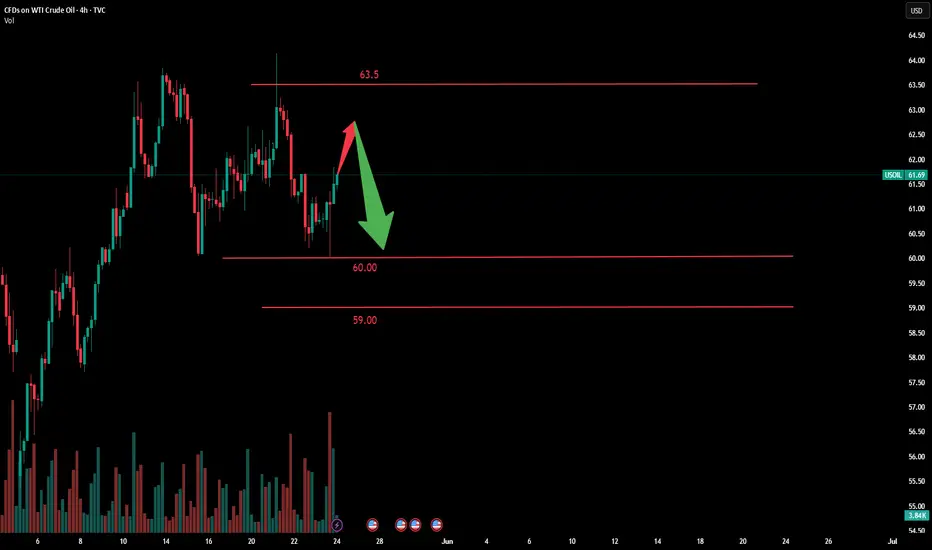Oil prices remained under pressure this week, experiencing a notable decline due to multiple factors. As of Friday's Asian morning session, Brent crude futures fell 37 cents to $64.07 per barrel, while U.S. WTI crude futures dropped 39 cents to $60.81 per barrel. Brent crude fell 2% for the week, while WTI declined 2.7%.
Key Drivers of Oil Price Weakness
Stronger U.S. Dollar
The U.S. House of Representatives passed President Donald Trump’s tax-cut and fiscal spending bill, boosting the U.S. dollar index against a basket of currencies.
As oil is dollar-denominated, a stronger dollar typically reduces purchasing power for non-USD buyers, suppressing oil prices.
Supply-Demand Sensitivity and Market Sentiment
The combination of dollar strength and expectations of OPEC+ production increases has intensified bearish sentiment in the oil market.
While demand is gradually recovering, significant upward pressure on supply—including potential output hikes from OPEC+ and rising U.S. shale production—has created near-term volatility.
Technical Outlook and Trading Strategy
Short-Term Trend: Oil prices are likely to remain in a sideways-to-downward oscillation due to supply-demand imbalances.
Key Levels:
Resistance: $63.0–$63.5 per barrel (short-term overhead resistance).
Support: $60.5–$60.0 per barrel (critical near-term support zone).
Trading Approach:
Consider rebound shorting as the primary strategy, with retracement buying as a secondary approach.
Use rallies toward $63.0–$63.5 to initiate short positions, targeting support at $60.5–$60.0, with stop-losses above $64.0.
Note: Monitor OPEC+ policy updates and U.S. inventory data for potential shifts in market sentiment. Volatility may rise ahead of key economic indicators.
Key Drivers of Oil Price Weakness
Stronger U.S. Dollar
The U.S. House of Representatives passed President Donald Trump’s tax-cut and fiscal spending bill, boosting the U.S. dollar index against a basket of currencies.
As oil is dollar-denominated, a stronger dollar typically reduces purchasing power for non-USD buyers, suppressing oil prices.
Supply-Demand Sensitivity and Market Sentiment
The combination of dollar strength and expectations of OPEC+ production increases has intensified bearish sentiment in the oil market.
While demand is gradually recovering, significant upward pressure on supply—including potential output hikes from OPEC+ and rising U.S. shale production—has created near-term volatility.
Technical Outlook and Trading Strategy
Short-Term Trend: Oil prices are likely to remain in a sideways-to-downward oscillation due to supply-demand imbalances.
Key Levels:
Resistance: $63.0–$63.5 per barrel (short-term overhead resistance).
Support: $60.5–$60.0 per barrel (critical near-term support zone).
Trading Approach:
Consider rebound shorting as the primary strategy, with retracement buying as a secondary approach.
Use rallies toward $63.0–$63.5 to initiate short positions, targeting support at $60.5–$60.0, with stop-losses above $64.0.
Note: Monitor OPEC+ policy updates and U.S. inventory data for potential shifts in market sentiment. Volatility may rise ahead of key economic indicators.
Disclaimer
The information and publications are not meant to be, and do not constitute, financial, investment, trading, or other types of advice or recommendations supplied or endorsed by TradingView. Read more in the Terms of Use.
Disclaimer
The information and publications are not meant to be, and do not constitute, financial, investment, trading, or other types of advice or recommendations supplied or endorsed by TradingView. Read more in the Terms of Use.
